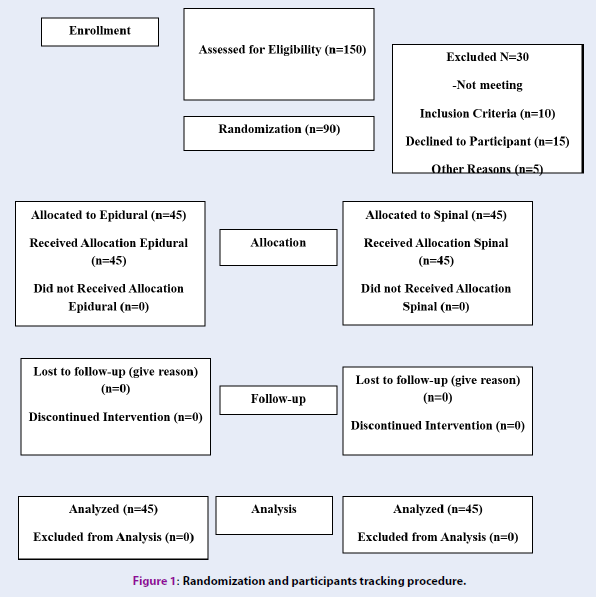Comparison of the effects of epidural and spinal anesthesia on analgesia and blood gases in neonates born by natural vaginal delivery: A clinical trial study
DOI:
https://doi.org/10.15419/bmrat.v7i3.595Keywords:
Painless delivery, Spinal anesthesia, Blood gas analysisAbstract
Introduction: One of the concerns of painless deliveries is the safety of neonates. This clinical trial study aimed to compare the effects of epidural and spinal anesthesia on the mortality rate of neonates.
Methods: This clinical trial was conducted in Hamadan Hospital in Iran. Ninety women, ages 18 to 45, were randomly assigned to receive epidural or subdural anesthesia. Using a checklist, the following were collected: demographic information, midwifery, hemodynamic status, mothers' pain intensity, and analyses of the baby's umbilical cord blood. The data were analyzed by SPSS version 16 for statistical analysis. Twenty-two of the patients with spinal anesthesia and epidural anesthesia were excluded from the study.
Results: There was no significant difference between the two groups in terms of age, gestational age, parity, and severity of pain before or after anesthesia. The hemodynamic status of the mothers before and during the first postoperative period was in the normal range, except that in the spinal group, a decrease in systolic blood pressure was observed in normal range compared with the epidural anesthesia group. In blood gas analysis, the mean pH, partial pressure of carbon dioxide (PCO2), and bicarbonate (HCO3) did not show significant differences between the two groups (p > 0.05). The only complications were acidosis and epidural anesthesia.
Conclusion: Based on the findings of the present study, both spinal and epidural opioids have no adverse effects on the health of neonates. However, both spinal and epidural opioid are preferred due to fewer changes in the hemodynamic changes in mothers and in umbilical cord blood gas.

Published
Issue
Section
License
Copyright The Author(s) 2017. This article is published with open access by BioMedPress. This article is distributed under the terms of the Creative Commons Attribution License (CC-BY 4.0) which permits any use, distribution, and reproduction in any medium, provided the original author(s) and the source are credited.
